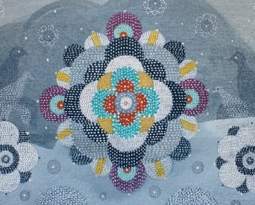Art today, we are constantly being told, is about ideas rather than objects. Painting has been reduced to a marginal, niche activity, while ‘expression’, the working out of feelings through art, is about as ‘out’ as it possibly could be.
So who then at the cutting edge is interested in Jackson Pollock, the father of so-called Action Painting, who became internationally notorious for letting it all hang out on canvas? The answer is, just about everybody. For Pollock is one of those artists whose heroic achievements transcend time and fashion. He is one of the people who got us where we are today, not only in terms of art, but in understanding who we are.
When Pollock, who was born 100 years ago on 28 January 1912, began painting in the 1930s, progressive American art was a hickish offshoot of the European avant garde. Arshile Gorky, the Armenian painter who was to become a major catalyst in American art, observed that his American contemporaries not only didn’t understand the European models they were drawing on, they didn’t even comprehend the significance of their own work. Pollock and his Abstract Expressionist cohorts – Rothko, de Kooning, Newman et al – were the artists who changed all that, who made American painting the dominant phenomenon in international art, shifting the focus of the art world from Paris to New York. Yet Pollock’s significance extends far beyond his impact on American art.
Before Pollock, paintings were created on easels, conceived, executed and seen from one direction only, as they had been for centuries. Not even Picasso changed that. But Pollock, wrestling with the problems of Surrealism, of how to get deeper into the internal subject of the work, began to work on the floor on unstretched canvas with very liquid paint, leaving the idea of a pre-meditated subject far behind. While the resulting paintings, dripped, rather than daubed onto the canvas, were hung on the wall with a definite ‘right side’ up, they were approached in their making from several angles at once – an effect the critic Clement Greenberg described as ‘all over’ – with the artist standing on the canvas, physically inside the painting as he was creating it.




